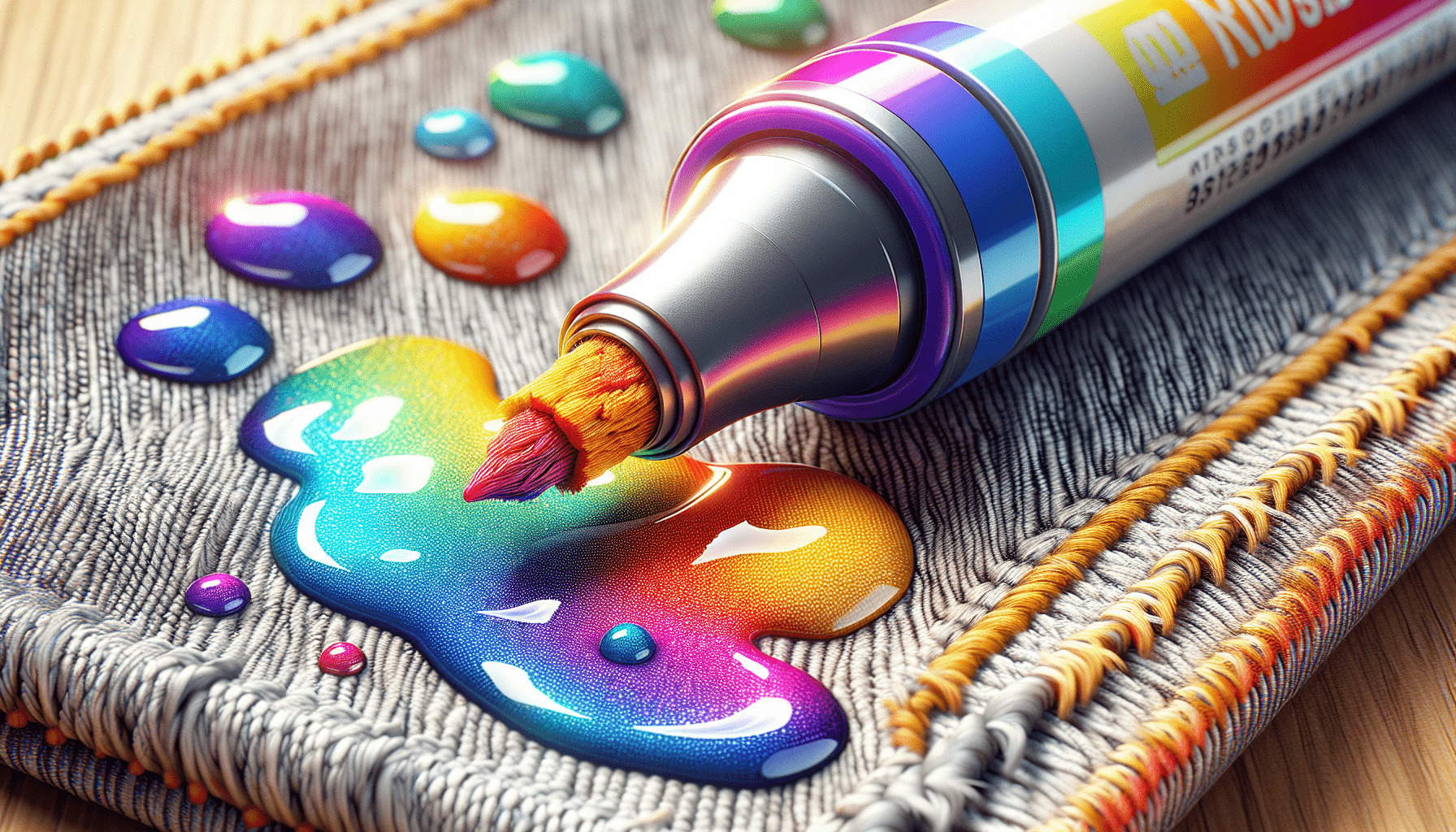Have you ever found yourself in a position where a paint marker you once relied upon has dried out, rendering it seemingly useless? This article will provide a detailed guide on how you can revive your favorite paint markers and extend their lifespan.
Understanding Paint Markers
What Are Paint Markers?
Paint markers are convenient tools used for various applications, ranging from arts and crafts to industrial settings. They contain a type of paint that is housed within the marker and released through a felt tip. The ease of application makes paint markers highly versatile.
How Do Paint Markers Work?
Paint markers typically consist of a cylindrical tube that holds the liquid paint, a felt tip that dispenses the paint, and a cap to prevent the paint from drying out. When pressure is applied to the tip, the paint is released, allowing you to draw or write smoothly.
Common Reasons for Paint Markers Drying Out
Exposure to Air
One of the most common reasons for paint markers drying out is exposure to air. If the cap is not secured tightly or left off for an extended period, the solvent in the paint evaporates, leaving behind a dry residue.
Improper Storage
Storing your paint markers horizontally or in a humid environment can contribute to them drying out. Vertical storage is often recommended to keep the paint concentrated at the tip.
Overuse
Excessive use without properly priming the marker can also lead to drying out. The felt tip may become clogged, preventing the paint from flowing smoothly.

How to Revive Dried-Out Paint Markers
Step-by-Step Guide
Here are several methods to bring your dried-out paint markers back to life:
Method 1: Water-Based Paint Markers
For water-based paint markers, consider the following steps:
- Check the Marker: Ensure that the marker is completely dry.
- Dip the Tip in Water: Submerge the marker tip in a small cup of water for about 15 seconds.
- Test: Try writing on a piece of scrap paper.
- Shake: Shake the marker vigorously to mix the paint thoroughly.
- Prime the Marker: Press the tip down on a hard surface repeatedly.
Method 2: Solvent-Based Paint Markers
For solvent-based paint markers, these steps often yield the best results:
- Check the Marker: Ensure that the marker is completely dry.
- Dip the Tip in Alcohol: Submerge the tip in a small container of rubbing alcohol for about 10 seconds.
- Test: Try writing on a piece of scrap paper.
- Shake: Shake the marker to mix the paint.
- Prime: Press the tip down repeatedly to promote paint flow.
Method 3: Heat
Applying a small amount of heat can loosen the dried paint:
- Prepare: Use a hairdryer at a low setting.
- Apply Heat: Focus the heat on the marker tip for about 20 seconds.
- Test and Prime: Try to write on paper and prime as needed.
Solutions for Severe Cases
For markers that are severely clogged or dried out, you may need to replace the felt tip. Many high-quality paint markers come with replaceable tips.
Buying Replacement Parts
Explore the availability for replacement tips from the manufacturer. These parts can be ordered online or purchased at art supply stores.
Testing the Marker After Repair
After attempting any of the above methods, always test the marker thoroughly on a piece of scrap paper. This ensures that the paint flows evenly and consistently.
Preventive Measures
Proper Storage
Storing your paint markers properly can significantly extend their lifespan:
- Vertical Storage: Store markers vertically with the tip facing down.
- Cool and Dry Place: Keep them in a cool, dry environment to prevent evaporation.
Securing the Caps
Always ensure that the caps are securely attached after each use. A tight seal prevents air from drying out the paint.
Regular Maintenance
Regularly using and checking your paint markers can keep them in optimal condition. Habitually shaking them and priming the tips can avert dryness.

Tips for Different Types of Paint Markers
Acrylic Paint Markers
Acrylic paint markers are water-based and can be revived with water. Simply follow the steps under the water-based paint markers section.
Oil-Based Paint Markers
Oil-based paint markers require solvent-based solutions, such as rubbing alcohol. Follow the steps outlined for solvent-based paint markers.
Chalk Paint Markers
Chalk paint markers can dry out similarly to other markers. Water immersion works well, and they should be stored horizontally.
Comparing Methods
Here’s a comparison table to help choose the best revival method based on the marker type.
| Paint Marker Type | Immersion Fluid | Immersion Time | Heat Application Recommend (Y/N) |
|---|---|---|---|
| Water-Based | Water | 15 seconds | Yes |
| Solvent-Based | Rubbing Alcohol | 10 seconds | Yes |
| Chalk Paint | Water | 15 seconds | No |
Common Mistakes and How to Avoid Them
Using Incorrect Solvent
Using the wrong solvent can ruin your marker. Always make sure to match the solvent with the paint type: water for water-based markers and alcohol for solvent-based markers.
Excessive Priming
Excessive priming without testing can over-saturate the tip, leading to blobs of paint. Prime gradually and test frequently to ensure even flow.
Ignoring Storage Guidelines
Storing your paint markers improperly can hasten their demise. Ensure they are stored vertically in a cool, dry environment.
Advanced Techniques for Enthusiasts
If you are an art enthusiast or frequently use paint markers for professional projects, consider these advanced techniques:
Custom Mixing
For custom colors and consistency, use a palette to blend and then refill the marker manually. This allows you to have unique shades tailored to your projects.
Airbrush Integration
For large-scale projects, convert the paint in your marker for use in an airbrush. This provides a smooth finish and greater coverage.
Sealing Solutions
Using a clear sealer over your paint marker work can protect it from smudging or fading. This is highly recommended for outdoor or exposed artworks.
Safety Precautions
Handling Chemicals
When using solvents like rubbing alcohol, ensure you are in a well-ventilated area and wear gloves to protect your skin.
Using Heat
If applying heat to revive dried paint markers, use low settings and avoid prolonged exposure to prevent damage to the marker.
Storage Safety
Store your markers and any chemicals used out of reach of children and pets to avoid accidental ingestion or contact.
Frequently Asked Questions
Can Dried Out Paint Markers be Permanently Fixed?
While many dried-out markers can be revived, some cases may require replacing parts or the marker entirely.
How Long Do Revived Markers Last?
The lifespan of a revived marker can vary based on usage and maintenance. Proper storage and regular maintenance can extend their service life.
Are There Environmentally Friendly Options for Paint Markers?
Several brands offer eco-friendly paint markers made from recycled materials or refillable options to reduce waste.
Conclusion
Reviving dried out paint markers is not just about prolonging their lifespan but also about ensuring you get the most value out of your investment. By understanding the reasons behind their drying out, employing appropriate revival techniques, and following preventive measures, you can make your paint markers reliable tools in your creative or professional endeavors.



